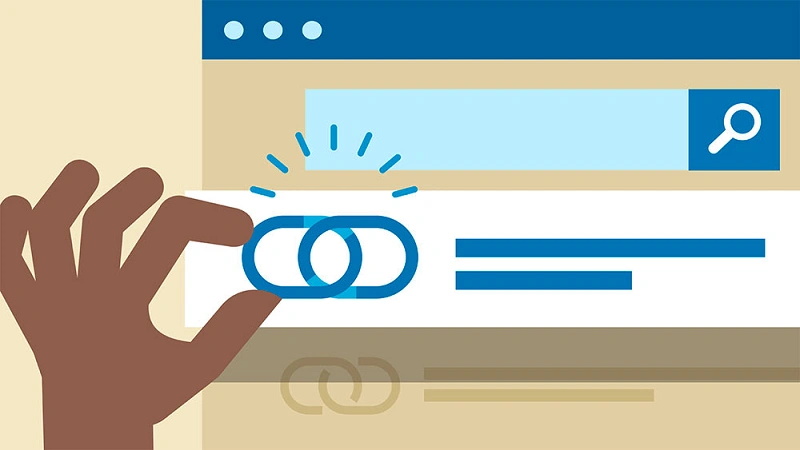Link building hasn’t died. It’s just gotten more complicated. Google’s guidelines keep getting tighter, the algo updates more ruthlessly, yet the fact remains: quality backlinks still move the needle. The catch? Buying them wrong can wreck your site. That’s why knowing how to safely buy links isn’t just useful, it’s essential.
And no, this isn’t about spammy gigs or low-effort tactics. This is the grown-up version of link building, calculated, quiet, and high-impact when done right.
Start with Intent, Not Volume
Let’s cut through the fluff. You don’t need “100 DA 50+ backlinks in 7 days.” That’s not link building. That’s waving a red flag at Google’s spam radar. The safest approach? Build with purpose.
Are you looking to:
- Push one page to the top 3?
- Diversify a link profile that’s too homepage-heavy?
- Support a content cluster?
- Boost a local service page?
Every link should serve a goal. If it doesn’t, it’s noise.
Metrics Are a Starting Point, Not a Guarantee
Yes, DR, DA, traffic, and link history matter. But they’re not everything. Safe link buying goes deeper than Moz or Ahrefs scores.
Ask better questions:
- Does the site rank for anything real?
- Is the content well-written or AI-generated?
- Are outbound links contextual or just a list of dofollow “placements”?
- Are they linking to casinos, CBD, or essay mills alongside you?
Google’s not blind. It sees a link between neighborhoods. Being next to trash lowers your value. You want clean, trusted, topic-relevant partners, not just high metrics.
Context Over Quantity
One dofollow link inside a paragraph on a real article beats 10 sidebars, footers, or “partner” pages. Always aim for:
- In-content placements
- Natural anchor usage
- Relevance between the page linking and your target
Buying links safely means blending in. If it looks like SEO, smells like SEO, and links like SEO, it’s not safe. Context makes it real.
Vary Everything — Anchors, Targets, Sources
Over-optimization is a one-way ticket to trouble. Safe link buyers mix it up:
- Anchor texts: brand, naked URLs, long-tail, generic, partial match, spread it.
- Target pages: don’t hammer one URL over and over
- Link types: combine guest posts, niche edits, directories, crowd links, PR, sponsorships
Diversity tells Google your site is naturally referenced. Monotony screams manipulation.
Don’t Skip the Vetting, Even on Marketplaces
Buying links through a vetted platform like Links-Stream gives you a head start. But don’t just trust the filters. Check for yourself. Open the site. Read the article. See who else they’re linking to. Evaluate their tone, layout, and update frequency.
Just because a site passed once doesn’t mean it stays clean forever. Recheck. Reevaluate. A good link today can turn toxic in six months if the site sells out to spammers.
Look Beyond “SEO Blogs”
Everyone’s favorite niche: SEO blogs. But a link in yet another article about “Top 5 Ranking Tips” isn’t doing you favors, especially if it’s linking to plumbers, casinos, and SaaS in the same piece.
Safer bets:
- Real niche sites in health, travel, finance, education, tech, parenting, lifestyle
- Region-specific sites with active local content
- Topic-matched posts that add value
Stay away from link farms in disguise. They’re often easy to spot, same templates, repetitive content, and no real audience.
Understand the Risk, Then Manage It
Let’s be honest. Buying links carries risk. Always has. Always will. But there’s a difference between gambling and playing the game smart.
Here’s how pros reduce exposure:
- Don’t build links on penalized or deindexed sites
- Avoid services offering link “injections” without editorial control
- Steer clear of bulk deals with no context
- Spread purchases across weeks, not days
And most importantly, never use your main money site to test risky tactics. If you’re going aggressive, do it on a buffer asset or secondary domain.
Track Everything, But Not Just With Ahrefs
Safe link buying isn’t set-and-forget. Monitor your links regularly. Tools help, but they don’t catch everything.
Check:
- Is the link still live?
- Has the anchor changed?
- Did the page get noindexed?
- Has the referring domain dropped in quality?
If you’re using a service like Links-Stream, you can automate some of this, but always run spot checks. A toxic link left unchecked can undo months of good SEO.
Don’t Chase “Cheap” , Chase ROI
A $150 link on a clean, niche site with traffic is usually a better investment than 10 $15 links on dead PBNs. Cheap links are cheap for a reason. They either:
- Has no impact
- Disappear in 3 months
- Hurt your site long-term
Safe link buying isn’t about bargain hunting. It’s about long-term value. Choose placements that bring authority, not just numbers.
Final Thought
Buying links isn’t black or white. It’s shades of gray, some light, some risky. The trick is knowing how deep you’re willing to go and where the real ROI lives. You can also buy backlinks from Link Paragon.
Used right, paid links are a tool, not a shortcut. They support content, open doors, and build authority. But only if done smart, slow, and with context.
So if you’re going to buy links, do it like a pro. With a plan, filters, and standards. Because in SEO, surviving is good, but growing safely? That’s what wins. learn more here.

